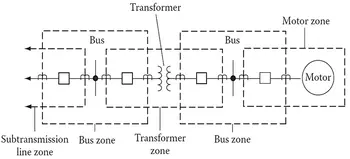What Is Overcurrent Protection

What is Overcurrent Protection?
An overcurrent situation is either an overload or a fault/short-circuit. The overload current is an excessive current flow relative to normal operating current, but still confined to the normal branch circuit paths provided by the conductors and equipmen. A fault (often referred to as a short-circuit) flows outside the normal circuit paths.
The National Electrical Code defines overload and overcurrent as any current in excess of the rated current of equipment or the ampacity of a conductor. It may result from overload, short circuit, or ground fault.
It can be accomplished using overcurrent protection devices, such as fuses, circuit breakers or protective relays, which are designed to safety - they protect electrical equipment. Relay protection against overcurrent is one of the best electrical protection methods. From the graded overcurrent relay protection system, a discriminative short circuit protection can be achieved. Overcurrent relay protection should not be confused with ‘overload’ relay protection, which typically utilizes relays in a time related way to determine the thermal capacity of the equipment and cause a breaker to trip in order to protect the equipment from overload. Overcurrent relay protection is completely directed to the clearance of short circuits.
Power System Protection Courses
Short Circuit Study & Protective Device Coordination
Arc Flash Analysis/Study - IEEE 1584 Update
When it comes to fuses, there are several factors to consider:
- voltage rating
- rating of the fuse
- interrupting capacity
Overloads
Overload conditions are most often up to 6 times the normal current level. They are usually caused by harmless, temporary in-rush currents that occur when motors start up or transformers are energized. Such overloads, or transients, are normal occurrences, and their brief duration is not harmful to circuit components as the associated temperature rise is minimal with no harmful affect. It’s important that overload protection devices are properly sized and have the appropriate operating characteristics so they do not react to these temporary overloads or cause “nuisance openings.”
Persistent, non-temporary overloads can result from defective motors (worn bearings) or when a full load is on a single circuit and must not be permitted to last long enough to damage electrical system components such as conductors. This damage may eventually lead to severe fault events if the overload is not interrupted.
Due to the overload’s inherent low magnitude nature, removing them within seconds or even minutes will generally prevent thermal damage.
Faults
Faults, also referred to as short-circuits, differ from overloads as they can be hundreds to thousands of times greater than the normal operating current. Fault current is a general term that’s used in this publication and includes ground fault, arcing fault and short-circuit currents. A high level short-circuit may be up to 30 kA or 200 kA, and must be interrupted as quickly as possible to minimize the damage that can include:
• High magnetic forces that warp and distort busbars and associated
bracing beyond repair
• Severe insulation damage
• Melting or vaporizing conductors
• Vaporizing metal, including buswork in electrical equipment
• Ionized gases
• Arcing fires
• Explosions
Friemel’s Law
Paul Friemel was known in the electrical industry as the Professor of Overcurrent Protection from the mid-1960s until his passing in 2015. As a licensed professional engineer, he presented seminars on electrical overcurrent protection for more than 40 years.
Friemel taught the three C’s of overcurrent protection which are now known as Friemel’s Laws of Overcurrent Protection:
1. Interrupting rating (Capacity)
2. Component Protection
3. Selective Coordination
An understanding of these three key electrical overcurrent protection principles will lead to a safe, reliable and code compliant electrical system.
Read Other Electrical System Protection Articles
Transformer Protection Explained
Maximum Fault Current Calculation
On-Site Training
Interested in cost effective, professional on-site electrical training?
We can present an Electrical Training Course to your electrical engineering and maintenance staff, on your premises, tailored to your specific equipment and requirements. Click on the link below to request a Free quotation.
EF PARTNER MEDIA
Product Showcases
Shared Media
















